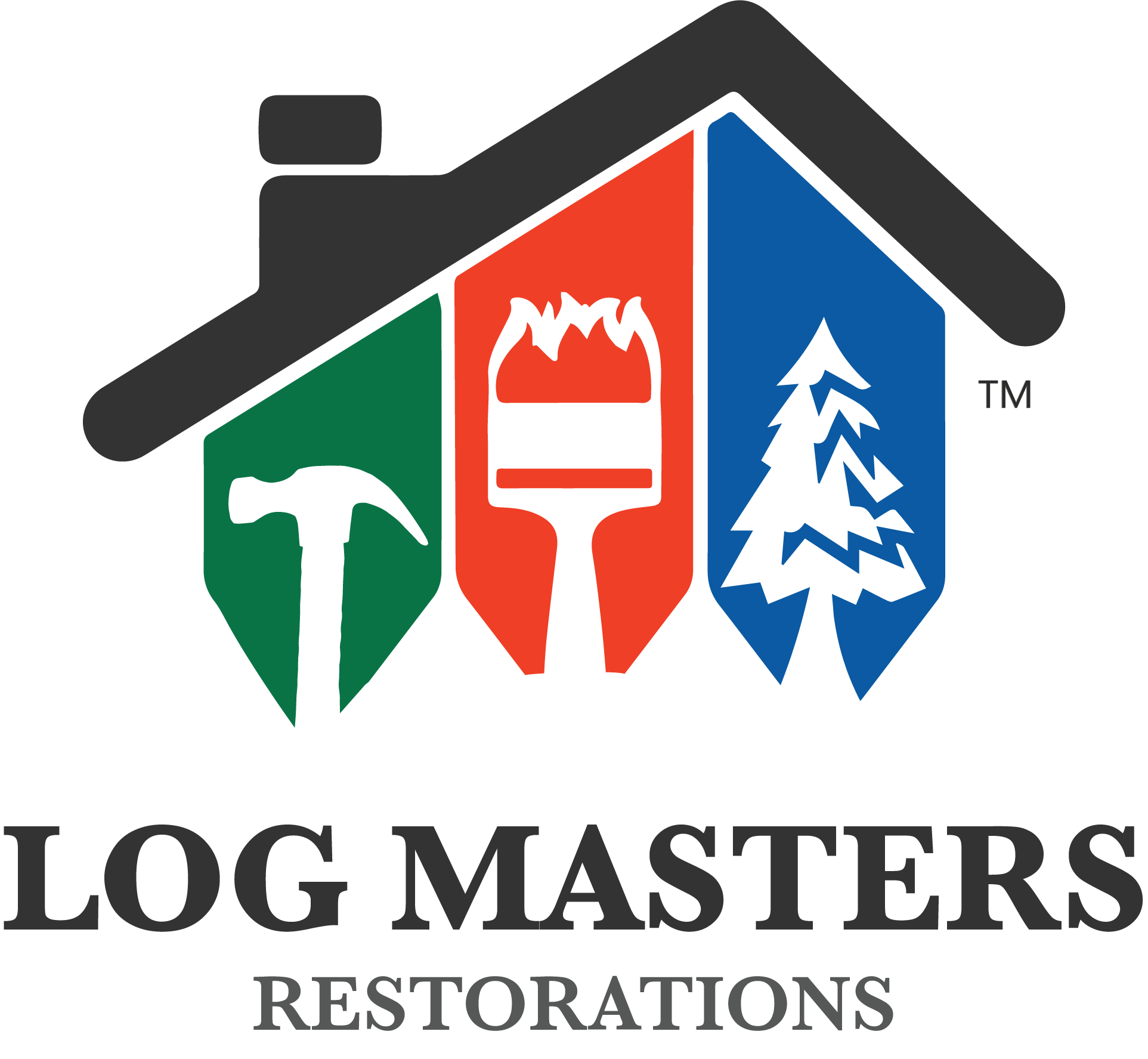If you’re a log cabin owner or enthusiast, the term chinking is probably familiar. Chinking seals the gaps between your logs, vital in keeping your beautiful cabin comfortable and habitable. You may have wondered what log cabin chinking is and why it’s crucial in conserving these rustic beauties. Our guide will help you understand what log cabin chinking is, explore different chinking materials, and explain how long it lasts.
What Is Log Cabin Chinking?
Log cabin chinking is the flexible sealant that fills the gaps between logs in a log cabin. Chinking is crucial in maintaining your cabin’s structural integrity and thermal performance. It’s like resealing your home from the outside, similar to caulking, but specifically designed for log cabins.
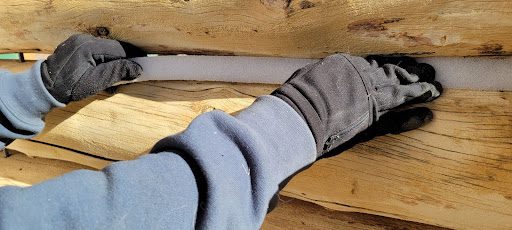
Modern chinking materials often include synthetic compounds. These synthetics are durable and can withstand environmental changes better than traditional materials. However, early methods of chinking were much more creative and resourceful. Pioneers used various materials, including grass, straw, mud, and underwear, to seal their log cabins. These traditional materials provided necessary insulation and protection despite their unconventional nature.
Using chinking in your log cabin is essential for preventing drafts and moisture from breaching your home. It also helps to keep pests and insects out, ensuring your cabin remains comfortable and secure. Whether building a new log cabin or restoring an old one, chinking is vital for cabins with wide gaps between the logs. It ensures your cabin remains cozy, dry, and well-protected against the elements.
Log Cabin Chinking Materials
The materials used for log cabin chinking have undergone significant changes over the years. What started as a matter of survival for pioneers has evolved into specialized products engineered for long-term performance and visual appeal. Understanding these materials helps homeowners appreciate the difference between traditional log cabin chinking and the advanced solutions available today.
Traditional Log Cabin Chinking
Early settlers didn’t have access to modern products, so they used whatever was available locally to seal their homes. Common materials included:
- Mud and Clay – Readily available, but prone to cracking and washing out with rain.
- Straw, Grass, and Moss – Organic fillers used with mud or clay to add strength and insulation.
- Animal Hair, Lime, or Ash – Sometimes mixed in to bind materials together.
- Fabric or Old Clothing – Believe it or not, scraps of cloth and even worn-out underwear were packed into gaps to block drafts.
While these log cabin chink materials did their job in the short term, they were far from durable. They required constant reapplication, often after every season, and did little to stop moisture intrusion or insect infestations.
Modern Synthetic Chinking
Today’s homeowners benefit from specially formulated chinking products that combine flexibility, durability, and aesthetics. These elastomeric compounds are designed to expand and contract in response to the logs’ natural movement with temperature and humidity changes. Modern chinking offers several advantages:
- Longevity – With proper application and maintenance, synthetic chinking can last 20–30 years.
- Weather Resistance – Engineered to repel moisture, withstand freeze-thaw cycles, and prevent air leaks.
- Pest Prevention – Creates a strong barrier against insects and rodents.
- Aesthetic Options – Available in a variety of colors and textures, so you can match your cabin’s style—whether you want a seamless blend or a high-contrast look.
- Energy Efficiency – Reduces heating and cooling costs by eliminating drafts and improving insulation.
Why Material Choice Matters
Choosing the right log cabin chink material is about protecting your home for decades. While traditional log cabin chinking methods tell a fascinating story of pioneer resourcefulness, modern chinking is the only option that provides the durability, flexibility, and efficiency homeowners need today.
At Log Masters Restorations, we use top-quality products from industry leaders like Perma-Chink and Sashco to ensure your cabin is sealed, secure, and beautiful for the long haul.
Log Cabin Chinking as a Cosmetic Feature vs Sealant
Chinking in log homes serves dual purposes, acting as a functional sealant and a cosmetic feature that enhances aesthetic appeal. Traditionally, chinking fills gaps between logs, preventing drafts, moisture intrusion, and insect infestations, ensuring structural integrity and energy efficiency.
Chinking adds character to log homes as a cosmetic feature, creating a rustic charm that blends seamlessly with natural surroundings. Homeowners can select from various colors and textures to complement the logs, emphasizing architectural styles ranging from traditional to contemporary. This customization allows log cabin chinking to serve as an integral design element, highlighting the craftsmanship and enhancing the overall visual appeal of the structure.
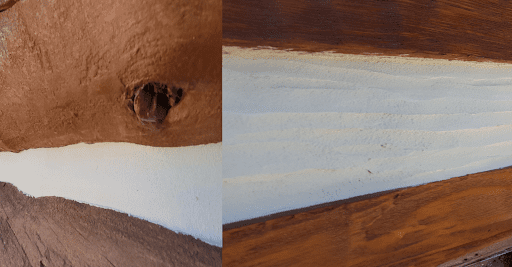
Ultimately, chinking’s dual role underscores its importance in protecting log homes and contributing to their unique aesthetic.
Benefits of Proper Log Cabin Chinking
Chinking ensures the longevity, stability, and comfort of your cabin. We’ve highlighted the multifaceted benefits of proper log cabin chinking to your cherished wooden home.
Weatherproofing
When we think about log cabin chinking, its role in weather resistance is crucial. Proper log cabin chinking effectively blocks rain, snow, wind, and sleet. This barrier keeps interiors dry and prevents water seepage that can cause rot or mold growth. Without this protective layer, logs can rot within two to three years, potentially leading to the loss of the entire cabin within ten to twenty years.
Imagine your cabin enduring harsh weather without any issues. That’s the power of good chinking. It extends the lifespan of your logs and maintains the structural integrity of your home. Proper chinking ensures your log cabin stays durable through varying weather conditions.
Insulation Benefits
Expertly applied log cabin chinking offers significant insulation benefits. Chinking seals gaps between logs, minimizing winter heat loss and maintaining summer coolness. This insulation reduces reliance on heating and air conditioning, saving energy over time.
Investing in high-quality log cabin chinking pays off in comfort and cost savings. It’s an essential part of maintaining a welcoming and energy-efficient log cabin. Proper insulation through chinking ensures your home is ready to face any season, keeping you warm in winter and cool in summer.
Structural Stability
Log cabin chinking plays a crucial role in maintaining structural stability. Acting like a ‘glue,’ chinking fills irregular gaps between logs. It adjusts dynamically with the contraction and expansion of logs due to temperature changes, securing the overall structure.
Proper chinking prevents serious issues that can arise from improper application. Without it, the structural integrity of your log home can be compromised, potentially leading to significant damage over time. Investing in skilled log cabin chinking applications is essential for the longevity of your wooden home. It ensures the logs remain tightly bound, providing a stable and secure environment.
Aesthetic Appeal
Beyond its functional benefits, chinking enhances the aesthetic appeal of your log cabin. Chinking allows you to blend or contrast according to your cabin style, personal taste, or the surrounding landscape. This customization lets you create a unique and visually pleasing look that complements your home’s natural beauty.
Proper log cabin chinking is the silent hero, adding character and charm to your log cabin while providing structural stability and comfort. It transforms the appearance of your cabin, giving it a polished and finished look that highlights the craftsmanship of the logs. The right chinking can accentuate architectural details, making your home stand out.
In summary, weatherproofing, insulation, stability, and aesthetics are just reasons chinking is indispensable for your log cabin. It’s a protective feature and an artistic element that adds to the charm and appeal of your wooden abode.
How Long Does Log Cabin Chinking Last?
One of the most common questions homeowners ask is: How long does log cabin chinking last?
The answer depends on several factors:
- Material Quality – High-quality synthetic chinking can last 20–30 years when applied correctly. Traditional chinking materials may only last a few seasons.
- Climate – Cabins exposed to extreme heat, snow, or heavy rain may require touch-ups sooner.
- Maintenance – Regular cleaning, sealing, and inspections significantly extend the life of your chinking.
At Log Masters Restorations, we use industry-leading products and application techniques to maximize lifespan, so you can enjoy decades of protection before major rework is needed.
How Often Should You Re-Chink a Log Cabin?
Even the best chinking needs maintenance. On average, homeowners should plan to inspect their log cabin chinking at least once a year and schedule touch-ups as needed.
Signs it may be time to re-chink include:
- Cracks form along the seal lines
- Gaps where chinking is pulling away from logs
- Visible light or air leaks inside the cabin
As a general rule, full re-chinking may be necessary every 15–20 years, depending on your environment. However, regular maintenance can extend these intervals and reduce costs.
Repair and Maintenance of Log Cabin Chinking
While log cabin chinking may seem like a one-time job, regular inspection is required to ensure continued efficiency. Detecting and repairing minor issues early prevents them from escalating into major problems. By staying vigilant and addressing any issues promptly, you can prolong the lifespan of your chinking and maintain its effectiveness.
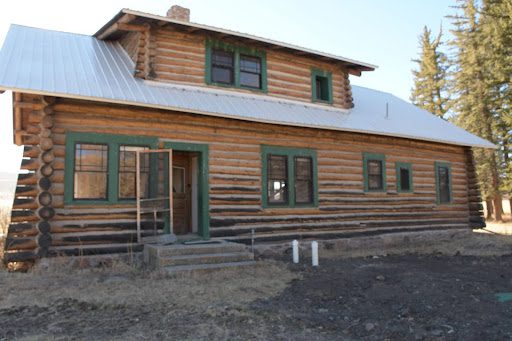
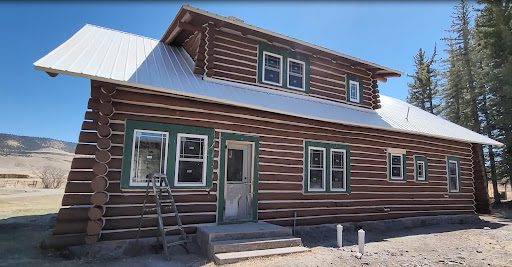
Routine Checks
Regularly checking your log house chinking is a crucial part of homeowner responsibility. Look for signs like cracking, pulling away from logs, or complete breakdowns during visual inspections.
Remember that fixing improperly done chinking costs three times more than doing it right initially. Prevention is cheaper and better for maintaining your cabin’s aesthetics and integrity, so seeking professional help is vital.
You can find issues early and avoid costly repairs by staying proactive with routine checks. Make it a habit to inspect your chinking regularly, ensuring your log cabin remains sturdy and weatherproof for years.
Cleaning And Sealing
Cleaning and sealing are crucial aspects of log cabin maintenance. Start by sweeping off dirt buildup and washing thoroughly to ensure proper adhesion. After cleaning, ensure the surface is dry before applying sealants for optimal effectiveness.
Remember, proper preparation is crucial in achieving the best results. Choosing the appropriate sealant is also critical. Opt for water-repellent products explicitly designed for chinked log homes. These sealants provide the best protection against prolonged exposure to the elements, ensuring the longevity of your cabin’s exterior.
Regular cleaning and sealing are essential parts of your maintenance routine. They protect your log cabin from damage and maintain its aesthetic appeal. Don’t underestimate the importance of these simple tasks—they are vital for preserving the integrity and beauty of your home.
Rejuvenation & Touch-Ups
Don’t worry if you notice minor cracks or chips in your log cabin chinking! With high-quality chinking material, minor touch-ups are manageable DIY tasks. However, for significant gaps or shrinkages, seeking professional help is wise. Gaps may indicate the chinking is aging or the product was installed incorrectly, so partnering with professionals like Log Masters could make a difference in your home’s longevity.
The proper chinking application involves cleaning and preparing logs, using a grip strip and backer rod, the right equipment, and using techniques for a lasting seal. Understanding when to tackle a task and when to call in professionals ensures you remain stress-free and not bogged down by maintenance.
Seek Expert Log Cabin Chinking From Log Masters Restorations
Are you looking for a top-notch log cabin chinking company? Look no further than Log Masters Restorations. We can promise quality service with our high-quality materials, years of experience, meticulous attention to detail, and excellent customer satisfaction. Flawless chinking becomes a reality with us, maintaining your log cabin’s robust integrity and aesthetic charm.
When it comes to chinking repair or replacement, we’re here to help. Our team understands each log home’s unique challenges and tailors our restoration processes to meet your needs. Contact us today for a free estimate, and let us build or restore your log cabin to its highest potential.
